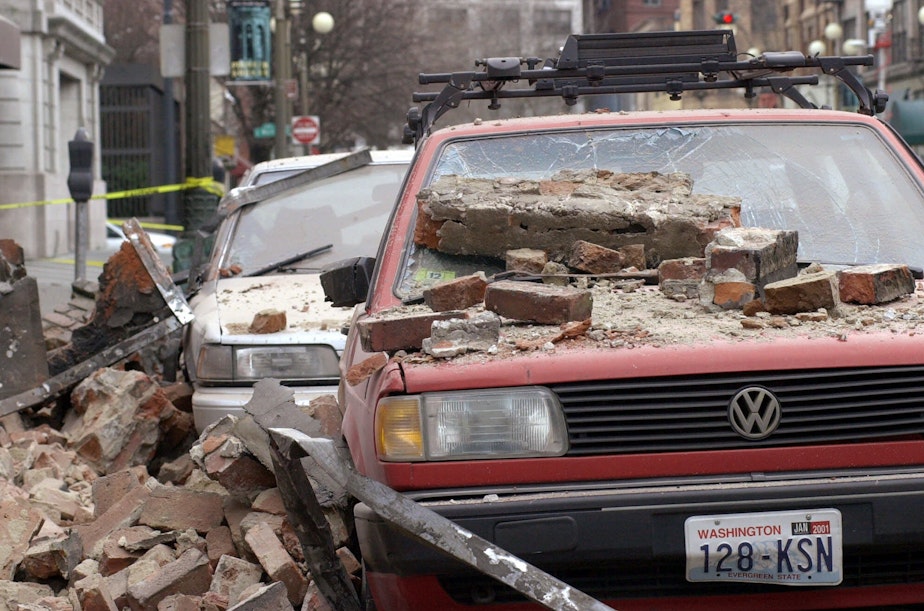When the big earthquake hits, 648 brick buildings in Seattle won’t be ready

In Seattle, 50% of the city's old brick buildings have had some sort of seismic repair work done.
On Thursday, October 21 at 10:21 a.m. was the annual earthquake drill in Washington — the Great Shake Out. And this year, Seattle is slightly more prepared for an actual earthquake.
Having 50% of Seattle's older buildings upgrades with seismic repair is an improvement. Only 40% had work done in 2016.
Old, un-reinforced masonry buildings are some of the most at risk of crumbling in an earthquake, because there's nothing structurally holding the walls and floors together. A basic seismic retrofit starts with anchoring the building or installing steel braces or other supports.
Sponsored
Seattle has at least 1,287 unreinforced brick buildings, a long list that included homes, concert halls, commercial facilities, and even schools, all at different levels of risk.
Of those that haven't had any seismic upgrades, at least seven are school buildings, three of them being facilities on the UW campus.
Seattle's inventory of "URMs" was updated in September, and lists addresses and what kind of retrofit work has been done. About half of them have shown they've done upgrades, ranging from basic structural anchoring all the way up to a full retrofit.
There are 648 that have not done retrofits. The inventory stacks up higher in many of the city's historic neighborhoods, including Capitol Hill (150 URMs), Pioneer Square/Chinatown-International District (122), Downtown and Belltown (120), Ballard (108), and Duwamish Valley/SoDo (79).
Sponsored
It's a problem statewide. There are at least 4,200 unreinforced masonry buildings scattered throughout Washington, which the Department of Commerce has inventoried.
The statewide list of those buildings is online.
But retrofits can be costly, and the state has hesitated to require building owners to do them. Seattle has also wavered on whether to require seismic fixes. As it stands now, there are requirements for new commercial buildings and remodels, and programs to help homeowners stabilize their masonry.
Meanwhile on the roads, Seattle and Washington’s transportation departments are one by one fixing up bridges. That way, in the event of the Big One, there are lifeline routes still intact. There priorities are Interstate 5 and Interstate 405 through the Puget Sound region, and the western segment of Interstate 90. Highway 99 is no longer a lifeline route.
As people practice earthquake preparedness at home they have one new tool at their disposal: the Shake Alert smartphone program. It launched in both Washington and Oregon this year.




